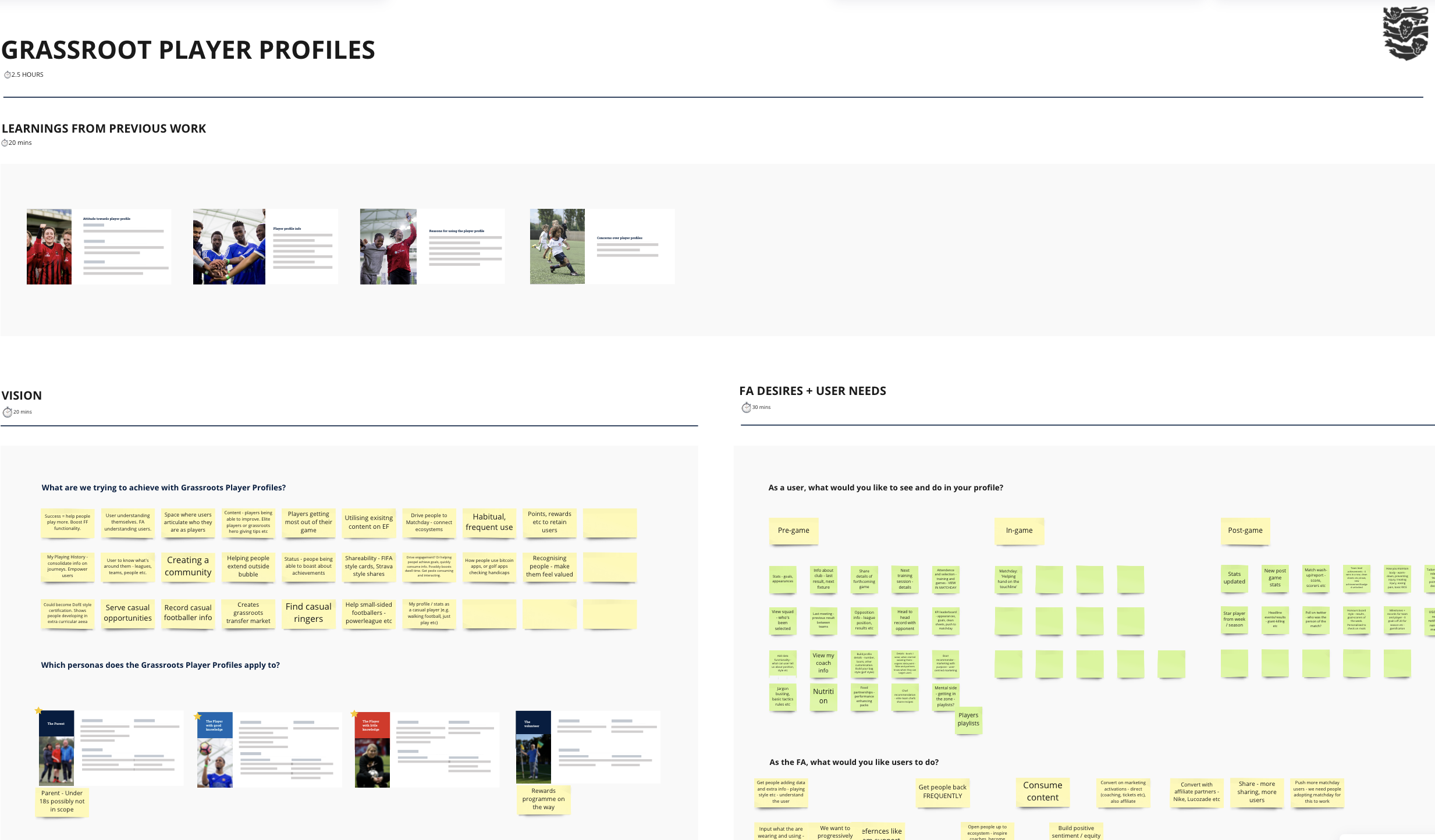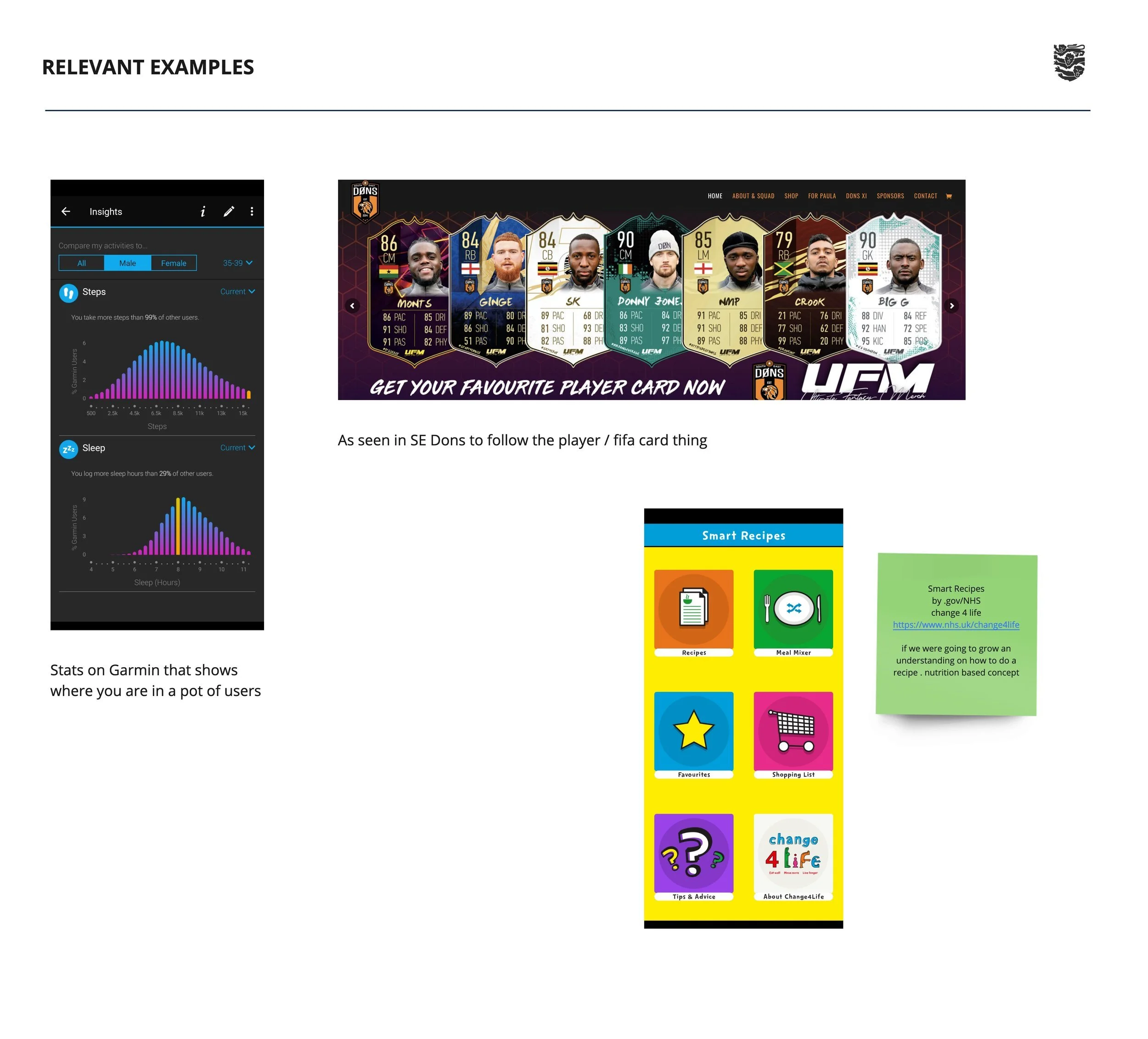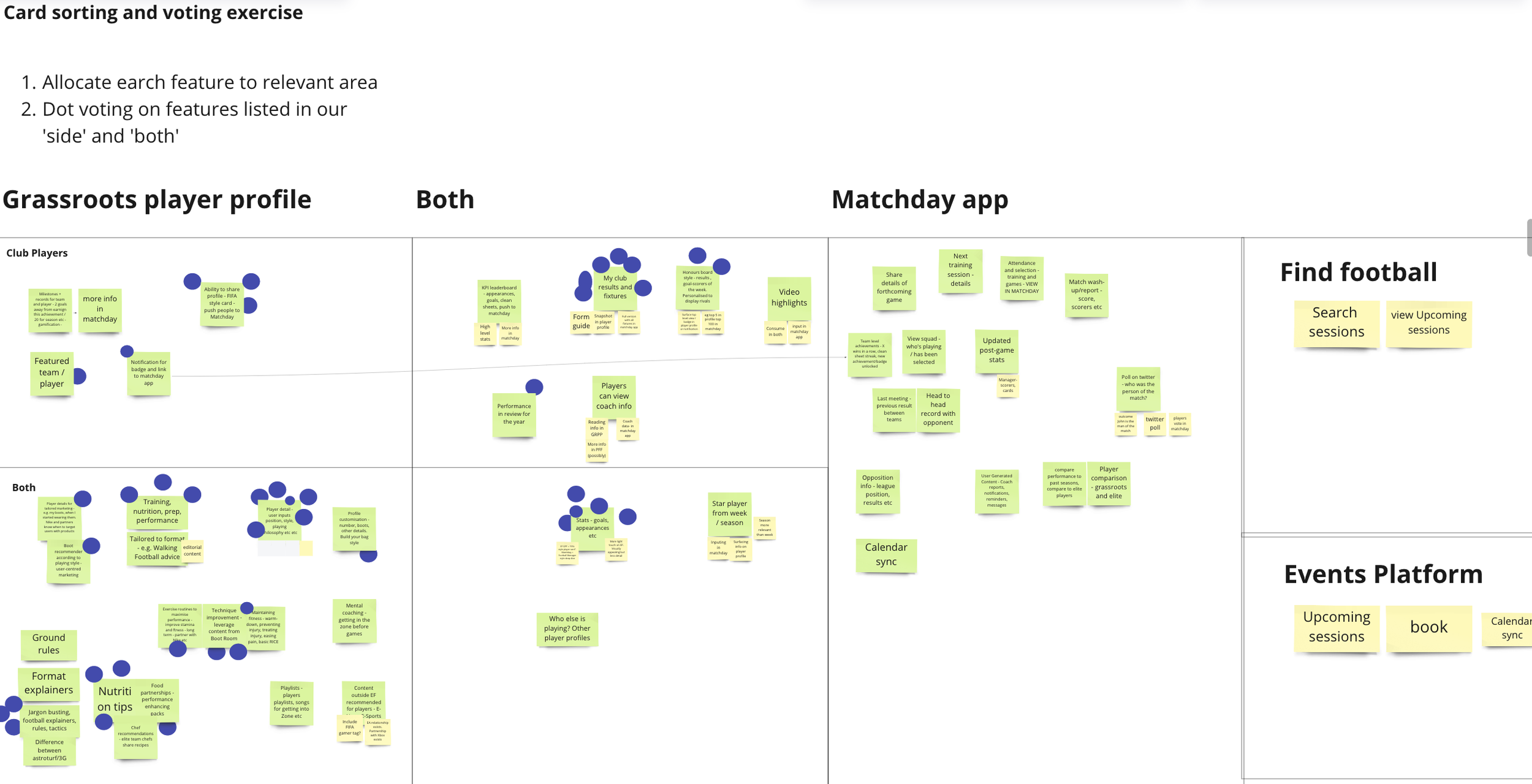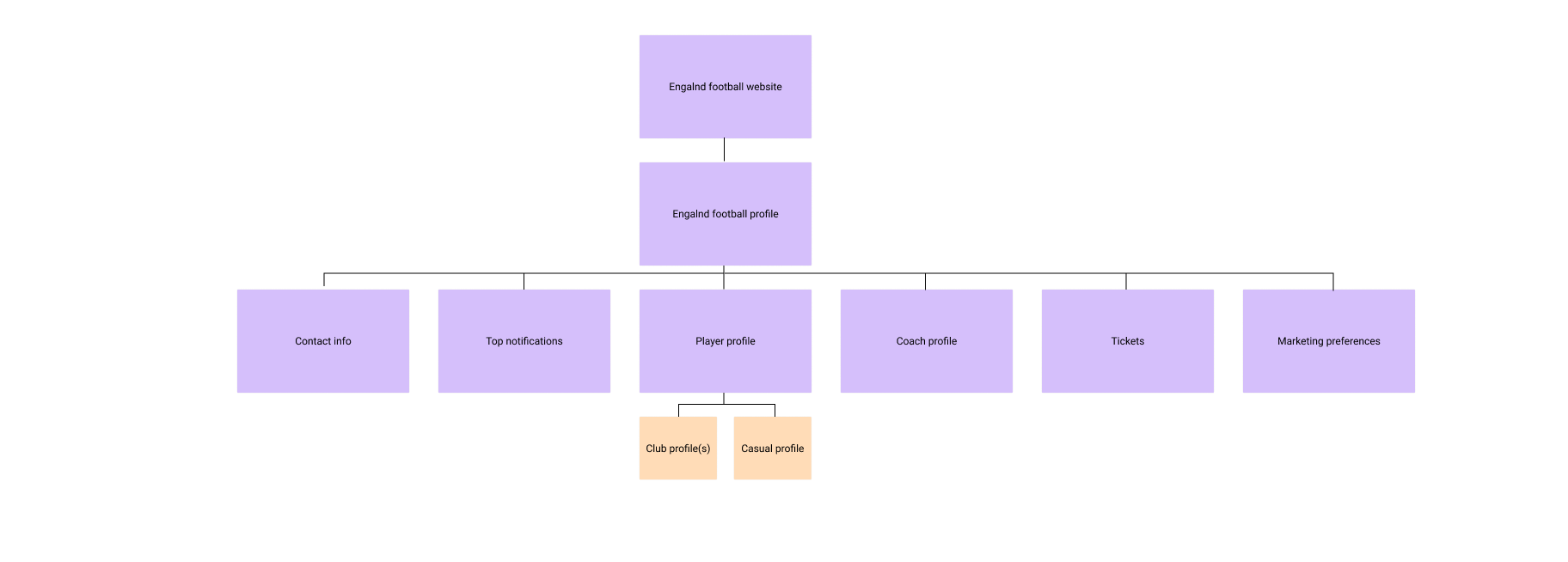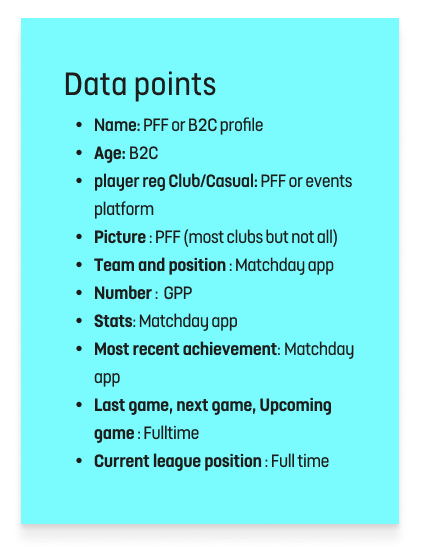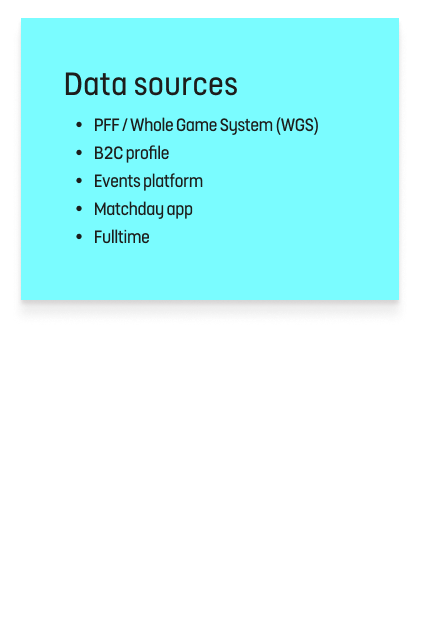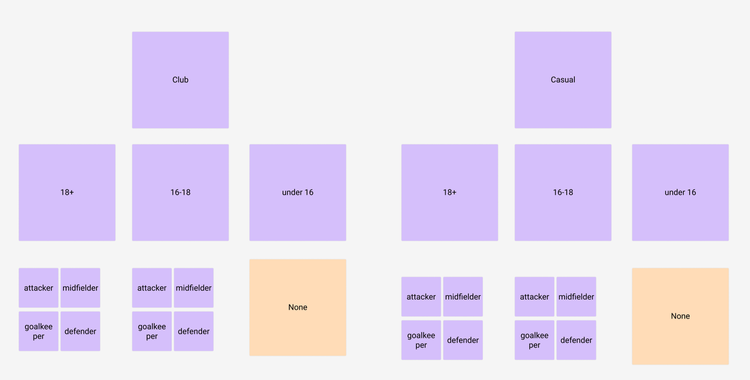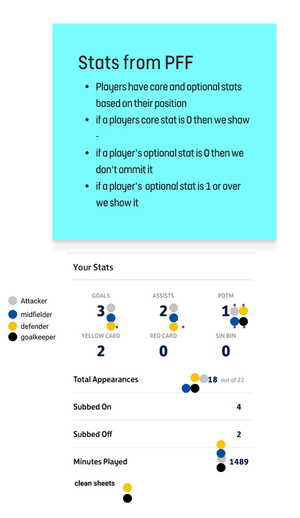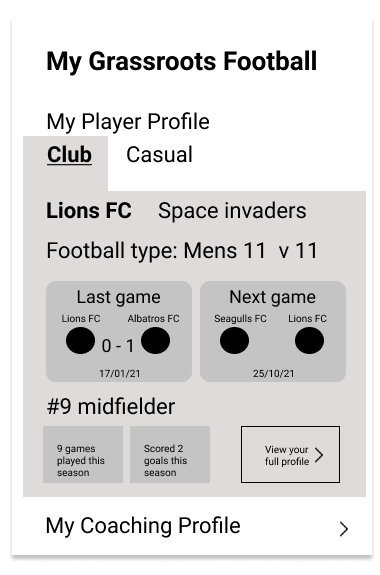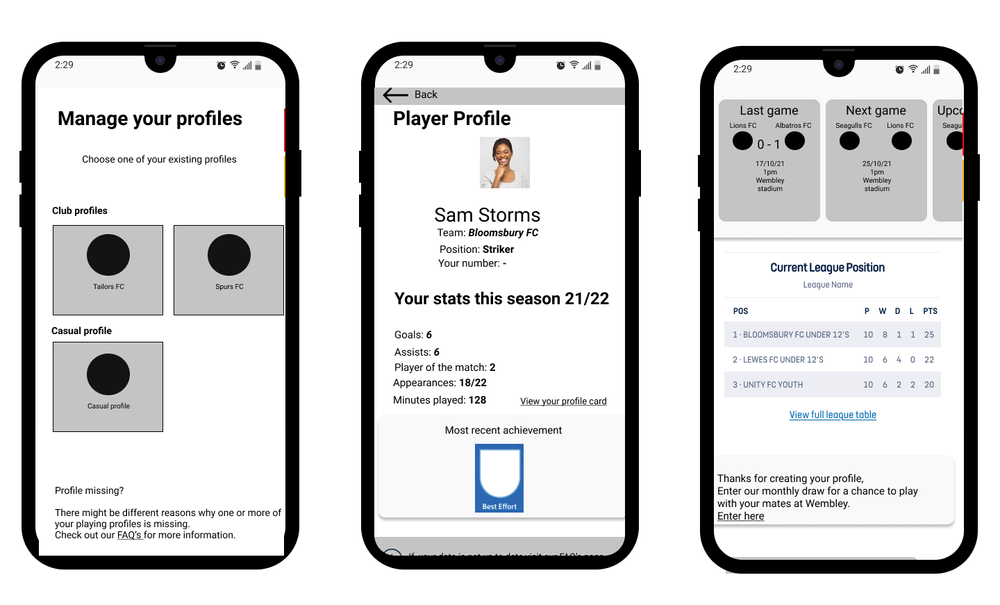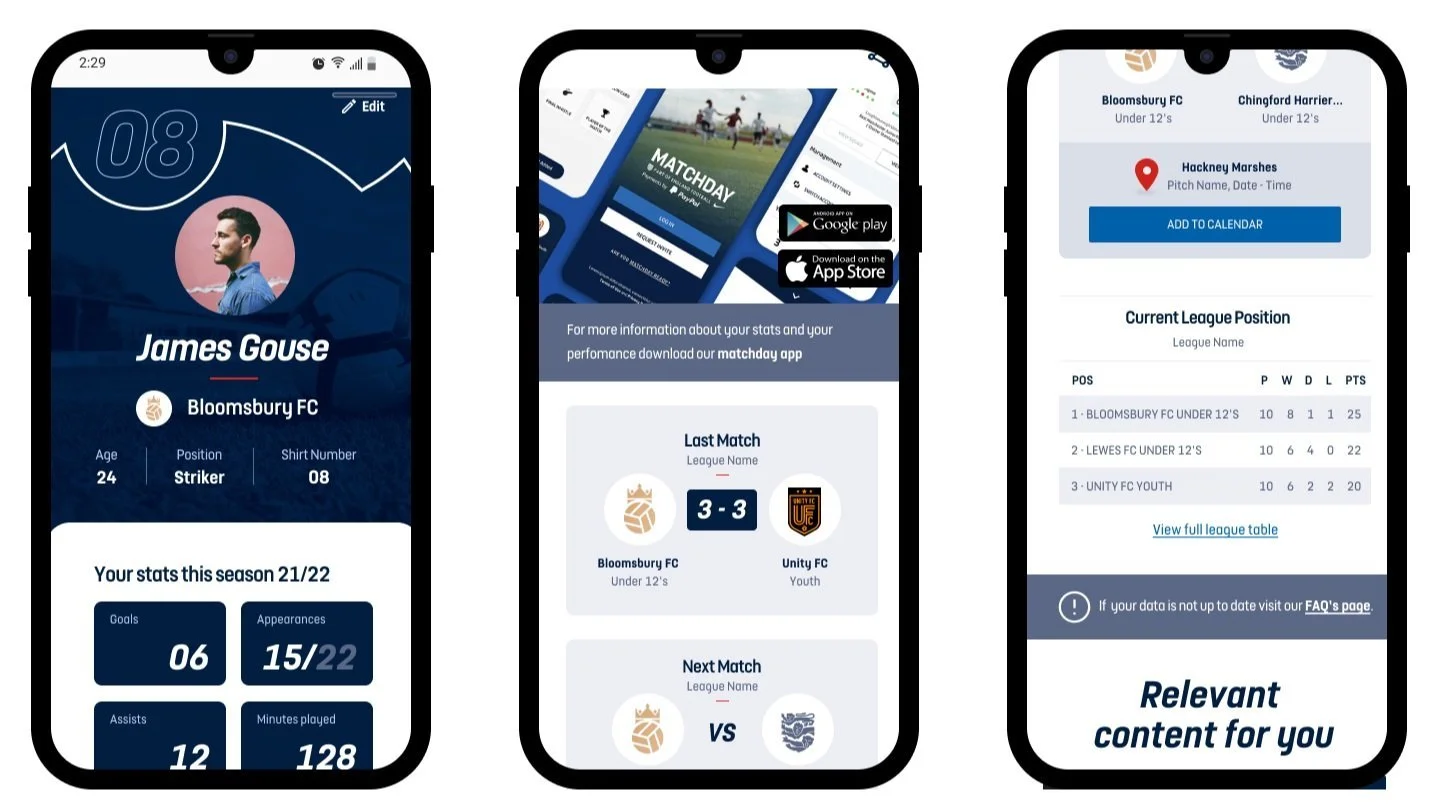The FA’s Grassroots player profile
Designing a player profile that leverages data from the entire FA ecosystem.
A little intro to the FA
The Football Association (FA) is the governing body for all football related matters in England. They’re also known for being responsible for disciplinary matters, for example what happens when players or coaches are sent off with a red card.
The FA’s main goal is to make grassroots football and the national teams accessible to everyone.
To achieve this, the FA in collaboration with Zone and Cognizant had previously launched two websites: England Football and Find Football. Their aim being to encourage more people play football, engage with the England team, and bridge the gap between grassroots and professional football.
Project goal
Increase engagement of grassroots football players by giving them more access to their own playing data. The concept of the Grassroots Player Profile, where users could view their playing stats, was seen as key to boosting participation, helping players develop, share achievements, and better connect various FA products within its ecosystem.
I was embedded in a team that included Zone and FA designers, offshore Cognizant developers, testers, a business analyst and Product manager.
Part 1 - Understand
1. Ideation workshop
In order to get a good grasp of the requirements and the surrounding context of this piece of work, the Content Strategist and myself planned and conducted a workshop with the business stakeholders, where we covered areas such as
previous research ,
project vision,
audience,
business and user needs,
ideas from competitors,
information we can leverage from other FA products
2. Follow up workshop to understand boundaries between Player profile and existing Matchday app
During our ideation workshop it became clear that there was an existing FA app, called Matchday app, allowing players to access some of their playing information. Since that seemed as a friction point, not only for the users but also for internal FA departments we decided it was necessary to run a second working session to understand the difference and the boundaries of each product and make sure everyone was happy with the result.
Requirements from the workshops
During the workshops, several key features emerged for the Playing Profile:
Users should be able to view their playing stats by leveraging various FA products
For safeguarding reasons the users needed to be over the age of 16.
The profile should help users understand how they perform and feel valued, with the introduction of badges.
An element of gamification should be included to encourage users to return to their playing profile.
The profile should offer tips and videos on how to improve performance.
The profile should encourage users to navigate across different apps and journeys within the FA ecosystem, as well as driving traffic to partner sites.
The profile should connect grassroots football communities.
The profile should help users understand themselves better, while also giving the FA a better understanding of its users.
Part 2 - Design
Information architecture
After examining the possible places that the Player profile could live within the existing information architecture, I worked with the BA and PO and agreed to place the Playing Profile within the user's profile area on Englandfootball.com.
2. Analysis of data points
A separate stream of work I did was to work closely with the business analyst to map out all the possible data points and use cases available.
This led us on a journey to discover a new set of FA systems that we could potentially draw some useful information from.
Having done the analysis of all data sources and data points we were able to create a proposal with data sets for each player scenario, based on the age of the player, position, and type of football they played.
3. Sketches
In order to start bringing all the insights together I created some initial sketches focusing on the types of information we could display and the user journey from a high level point of view.
My goal was to get feedback from the design team and BA before proceeding further and to ensure I was on the right path.
4. Wireframes
After gathering feedback from my team, I advanced to the next stage of the design process and created low-fidelity wireframes. During this stage, I focused on the layout and functionality with no emphasis on the aesthetics of the design. The aim was to visualise how the information could sit on the page.
After receiving feedback from the rest of the team, I produced a second iteration of the wireframes.
After a few iterations, which were discussed with the design, tech, and product management team, we landed on the design that we would move forward with.
I then worked closely with the visual designer to turn the wireframes into high fidelity designs. I also worked with the content strategist to define what relevant content could be surfaced in a section of the profile with tips and tricks.
Part 3 - User feedback
1. Initial feedback from the product manager and FA stakeholders
As soon as we had a set of designs in a state that we were happy to share, I worked with the product manager and organised a show and tell with internal FA stakeholders to gather their feedback and to keep them in the loop with our proposed plan. I ran them through the designs and captured their thoughts.
Off the back of that we needed to make a few changes to the designs but overall the stakeholders were happy with the result so far.
2. Testing with real users
The visual designer and I then set up a prototype which I was able to test with real users and get some constructive feedback.
Some areas needed better content and signposting so we had to go back to the designs and rethink the way we presented information on some of the pages.
We then ran another round of testing, which yielded really positive results.
Sadly, due to a change in the FA’s product delivery priorities, the development of the Grassroots player profile work was put off.
However, all the valuable learnings we took away and the designs we put together fed into the development of a separate piece of work, the Football Coaching profile.


